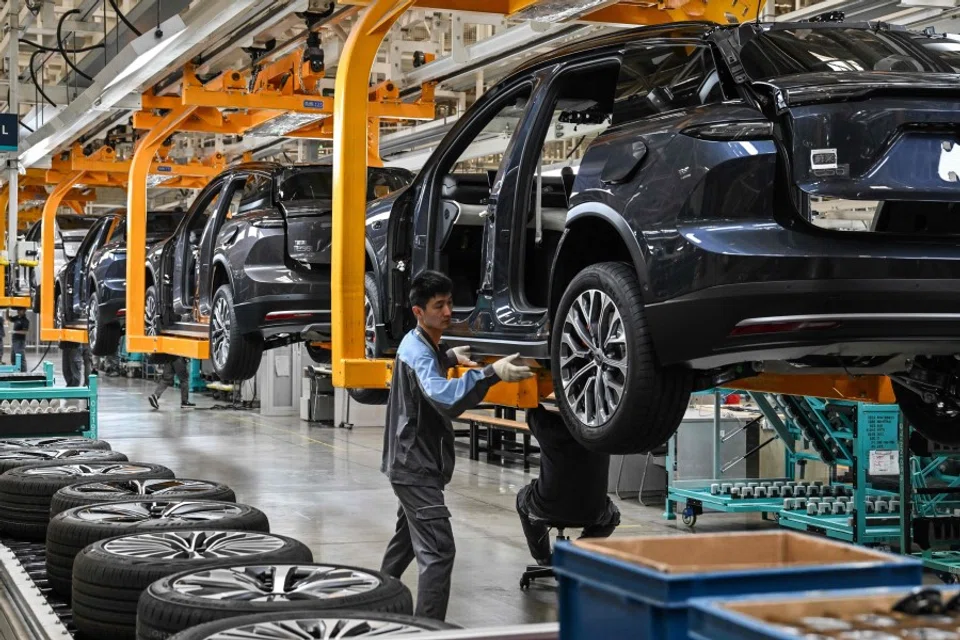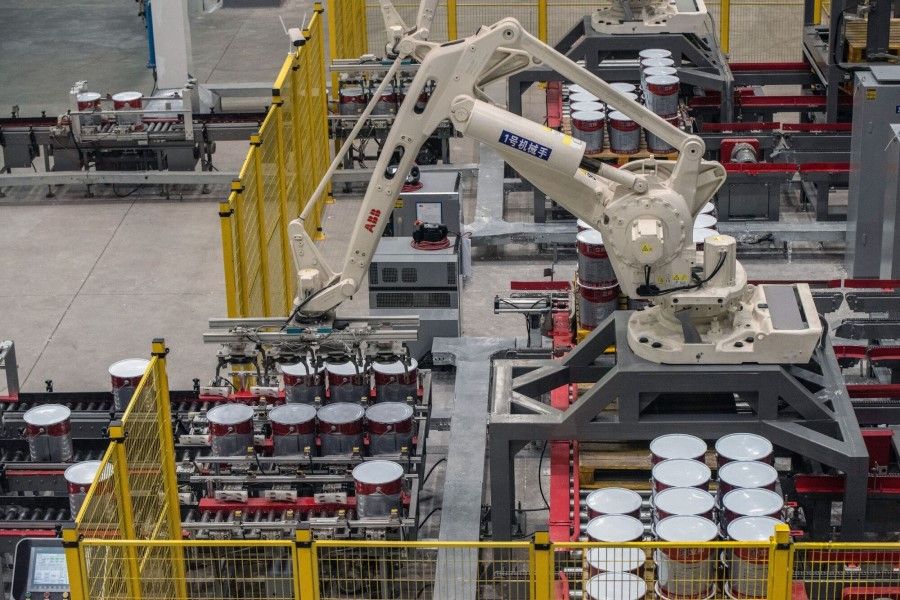Chinese manufacturers playing catch-up in core technology

How has the manufacturing sector in China changed since trade tensions with the US worsened several years ago?
China's recent Canton Fair and Shanghai Auto Show showed a glimpse of the situation on the ground.
The 133rd Canton Fair focusing on Chinese imports and exports ran from 15 April to 5 May 2023. It marked the return of in-person exhibitions in Guangzhou, Guangdong province, and symbolised China's dominance in world manufacturing. This year, 35,000 firms, of which half were from the manufacturing sector, participated in the fair.
Transitioning to advanced manufacturing
The latest exhibits included industrial welding robots, intelligent temperature control ovens and virtual reality goggles. China was on stage to showcase its intelligent manufacturing capabilities. Beyond manufacturing simple products, Chinese firms have now transitioned to advanced manufacturing.
The 20th Shanghai International Automobile Industry Exhibition in April was another showcase of the manufacturing shift from imitation to innovation.
Among 271 new energy vehicle (NEV) models introduced during the fair, 186 came from Chinese car makers. A model which attracted heavy media attention was BYD's U8, China's first domestic SUV that was priced at over one million RMB.
... Chinese manufacturers have been innovating to develop their technology. Great advances have been made not only in NEVs but also in aerospace and high-speed trains.

This shows that while some international firms have shifted their manufacturing operations from China to other countries, China's advanced manufacturing sector remains strong.
Chinese firms are not latecomers to the NEV global market. In 2022, China exported close to 680,000 NEVs. By 2023, Chinese NEVs had been sold to more than 100 countries and regions, becoming an icon of "Made in China".
The two fairs revealed that Chinese manufacturers have been innovating to develop their technology. Great advances have been made not only in NEVs but also in aerospace and high-speed trains.
Somewhat paradoxically, the trade decoupling of China and the US has forced Chinese manufacturers to independently develop their core technology, which is a boon to their long-term development and competitiveness. For example, there is strong state support and industry demand for made-in-China software and IT.
Still one of the best investment locations for manufacturing
Some developments point to China's strength as a manufacturing location.
For instance, even with US-China decoupling pressures, Tesla recently announced that it will build a new mega factory in Shanghai to manufacture powerful batteries. This is in addition to its Shanghai Gigafactory which began production of its vehicles in 2019. In 2022, this Gigafactory delivered 710,000 vehicles, some 48% more than the production output in 2021.
While average labour costs in China have increased, China still has its advantages as a manufacturing location.
First, China has a strong supply chain or what we call localised manufacturing ecosystems. Since its open-door policy, China has developed several regions into specialised manufacturing hubs. For example, Shunde specialises in microwave ovens, Yiwu for small commodities, and Foshan for clothes. The industrial clusters in these areas provide high efficiency and integration, enabling firms to produce at low costs. While the pandemic has affected supply chains, there is an increasing sense of normalcy as the country has eased restrictions.

Second, the Chinese government still welcomes foreign investments. China's new premier, Li Qiang, affirmed this during the China Development Forum in March 2023. China's Ministry of Commerce also launched a year-long campaign "Invest in China". Activities will be held in China and overseas to help foreign investors understand the country's business and investment environment.
Third, China has a great infrastructure network to support its manufacturing ambition. Its high-speed rail network has connected cities and now even links to Southeast Asia. The increasing number of college graduates provides a large pool of highly-skilled labour. Megacities such as Shanghai, Beijing and Guangzhou are becoming regional economic and financial centres.
... China still holds many high-end manufacturing jobs, which is critical to its development as a mature, high-value-add economy.
Fourth, China has been looking into opening up new markets. During the China-Central Asia Summit (18-19 May) held in Xi'an, Shaanxi province, Chinese President Xi Jinping met the leaders from five Central Asian countries. Activities like this summit, along with the Belt and Road Initiative, will open markets for Chinese manufacturers and also attract foreign investments in manufacturing.
Finally, China is in a long-term transition from a low-value-added to a high-value-added production economy, whether in manufacturing or services. Sanctions and trade tensions, as well as rising labour costs in China, have resulted in neighbouring Asian countries receiving a greater share of the high-labour-component manufacturing. But China still holds many high-end manufacturing jobs, which is critical to its development as a mature, high-value-add economy. Even independent of trade tensions, China's leaders would be seeking to yet again upgrade the country's manufacturing capabilities.
All these factors make China appealing as a location for manufacturing investments.
Still a long way to go
Despite these positive developments, the threat of trade decoupling creates challenges for Chinese manufacturers. We can see that when some governments lack confidence in Chinese firms, these firms may be forced out of certain markets, with Huawei being a notable example.

In many industries where Chinese manufacturers are latecomers, they still face the challenge of overcoming limitations in basic research. The Chinese government has invested millions of RMB in research and development to overcome this obstacle. The National Natural Science Foundation of China, one of the country's largest research funding sources, invested about 35 billion RMB in fundamental research in 2022.
The development would not have been possible without active participation from the US and other countries in China's economy.
It will take several more years for China to catch up with other developed countries in many manufacturing industries such as semiconductors and aviation technology. As an example, C919, the first "Made in China" commercial airplane, was delayed because of problems in its engine, which was packaged and imported from France-US joint venture CFM International. In that scenario, China could only wait for CFM to fix the problem.
Cooperation has eased the task of China's miraculous industrial development from the 1980s to the 2010s. The development would not have been possible without active participation from the US and other countries in China's economy. Although China is prepared to go it alone in its next phase of industrial development, reduced tensions and greater cooperation would be a win-win for all.

